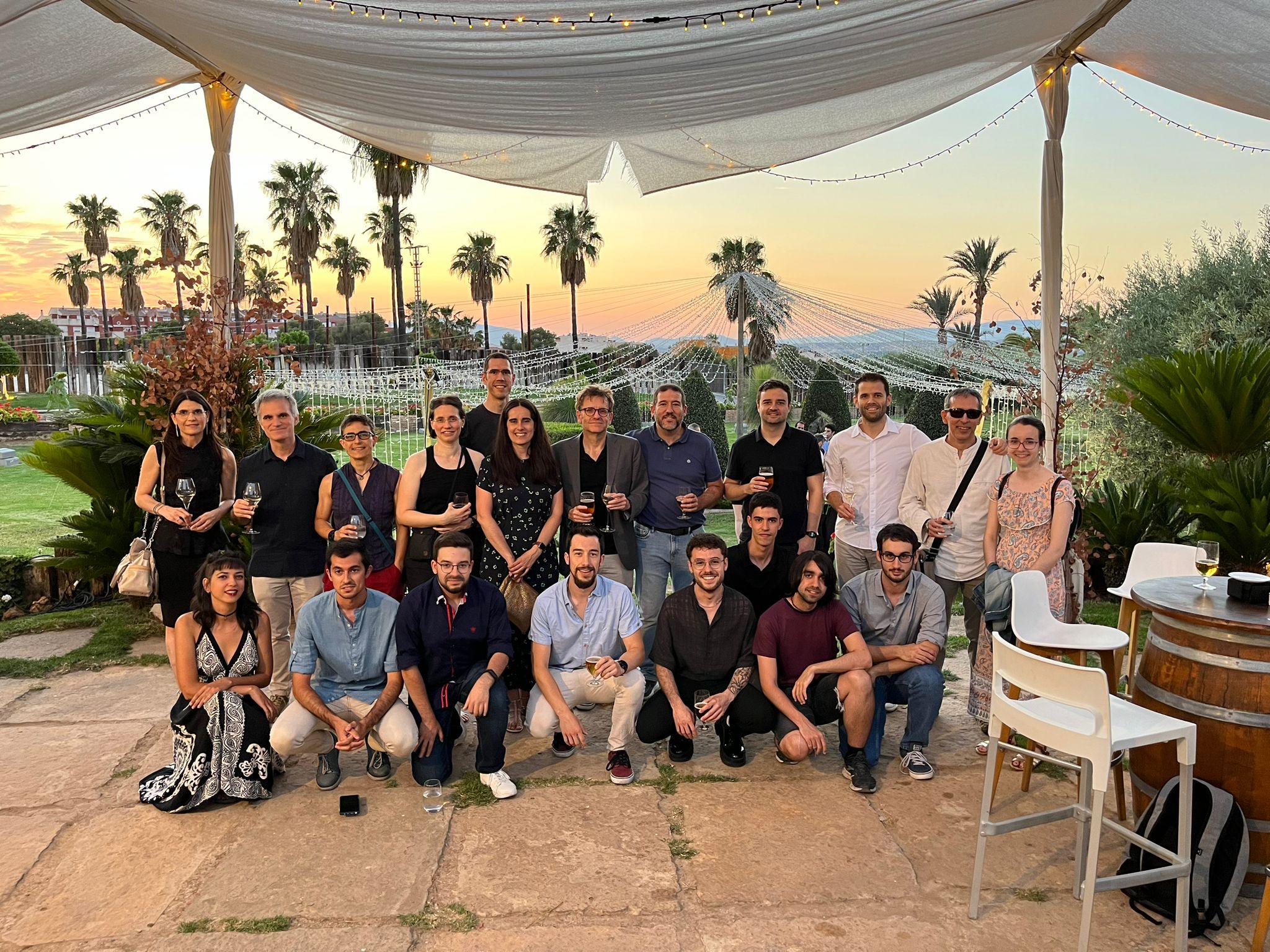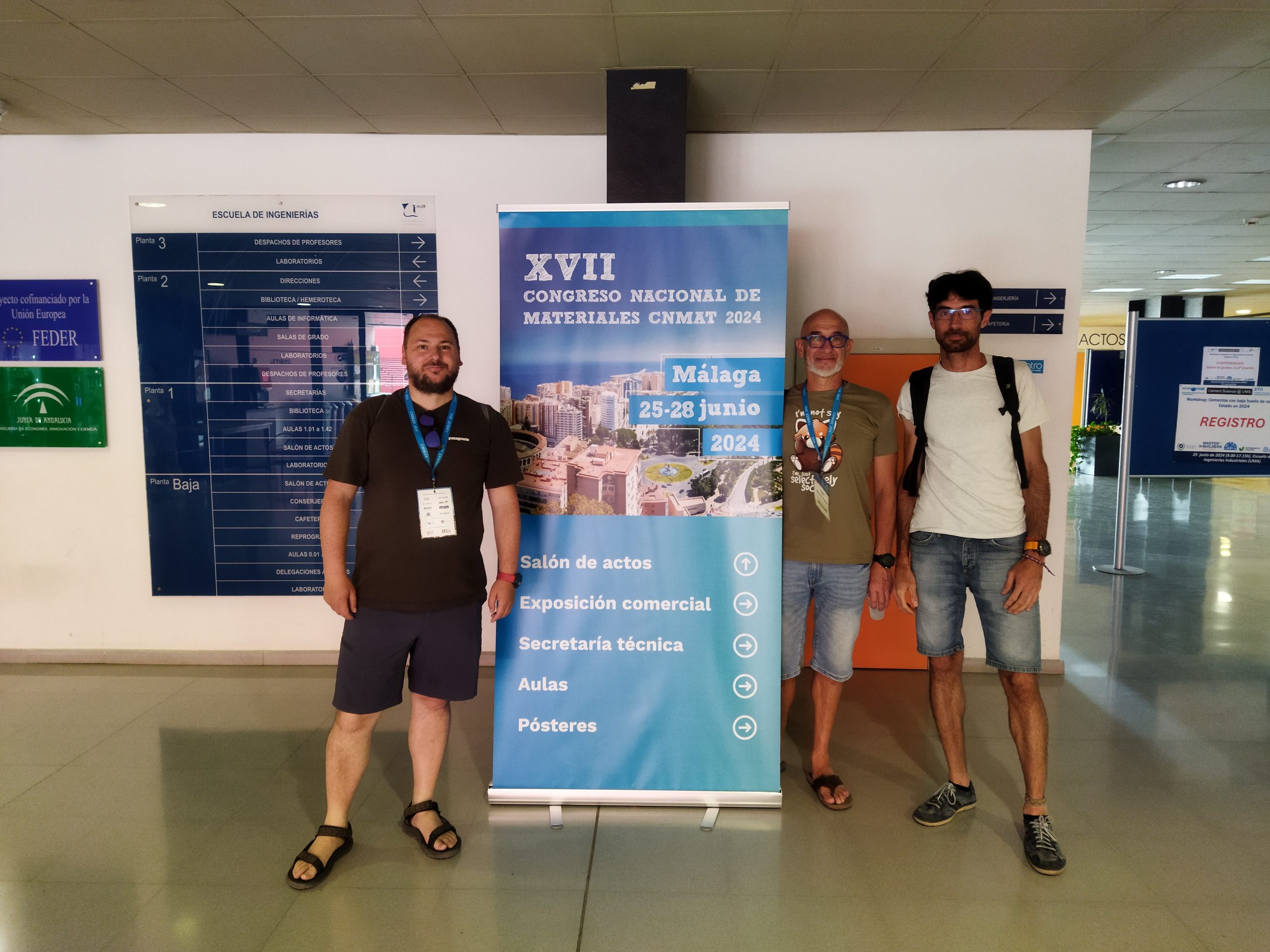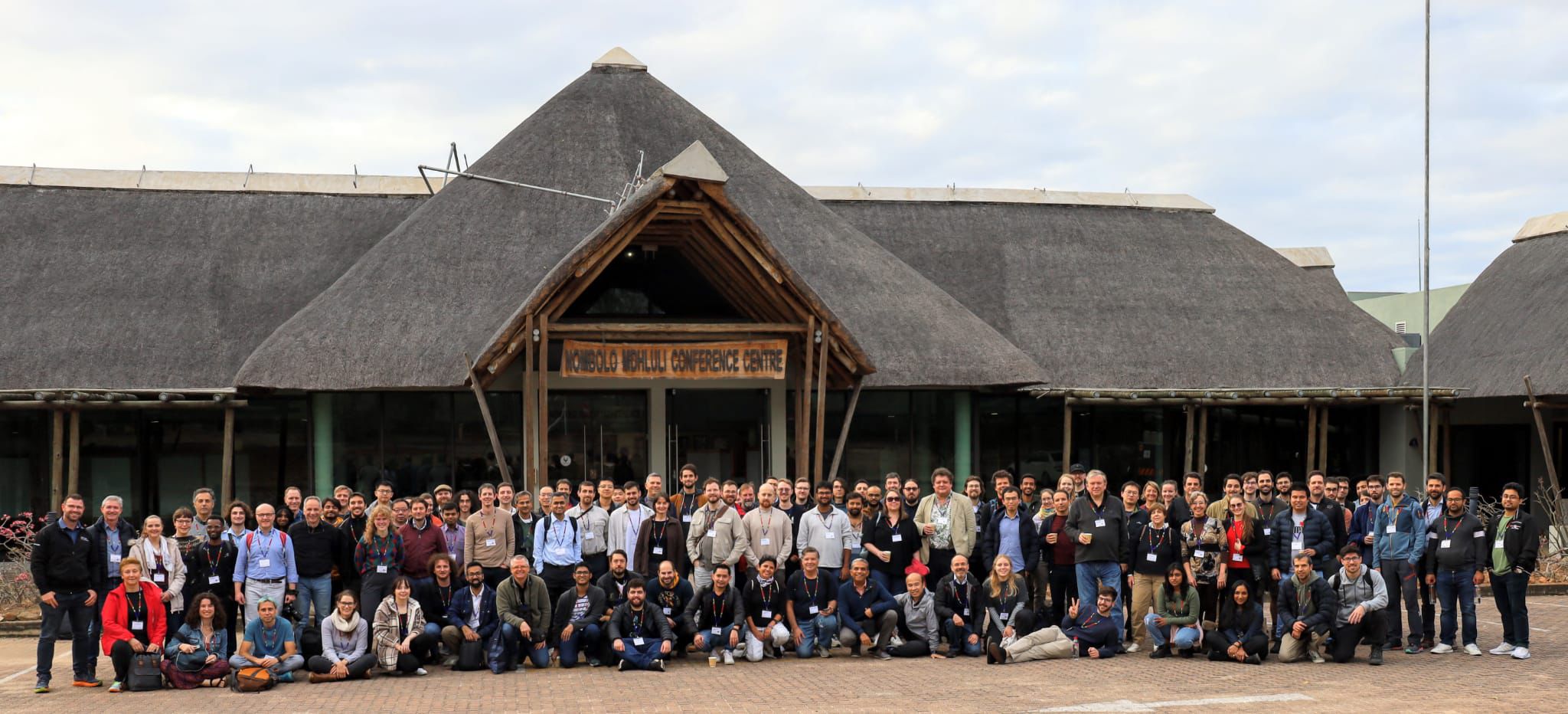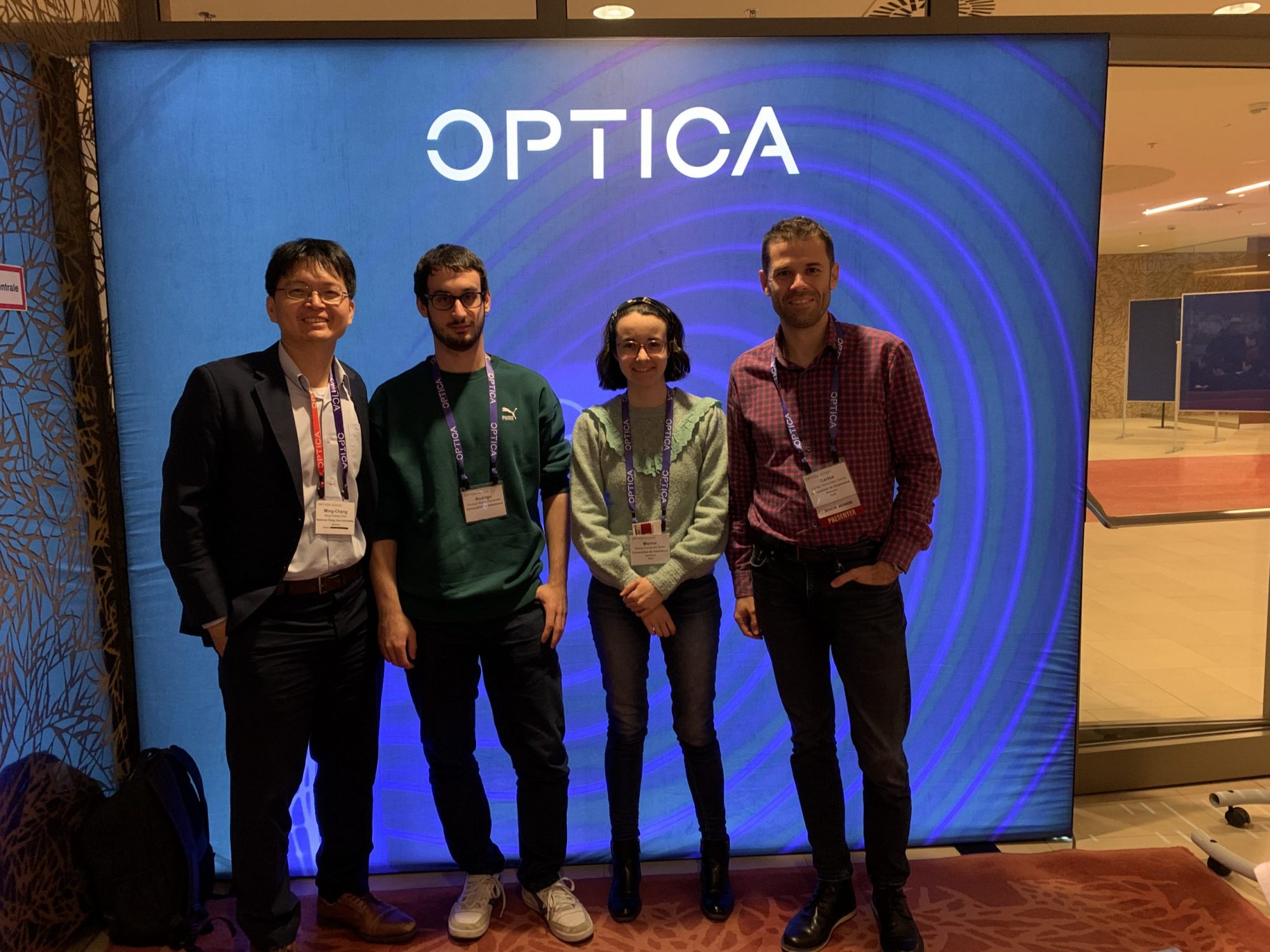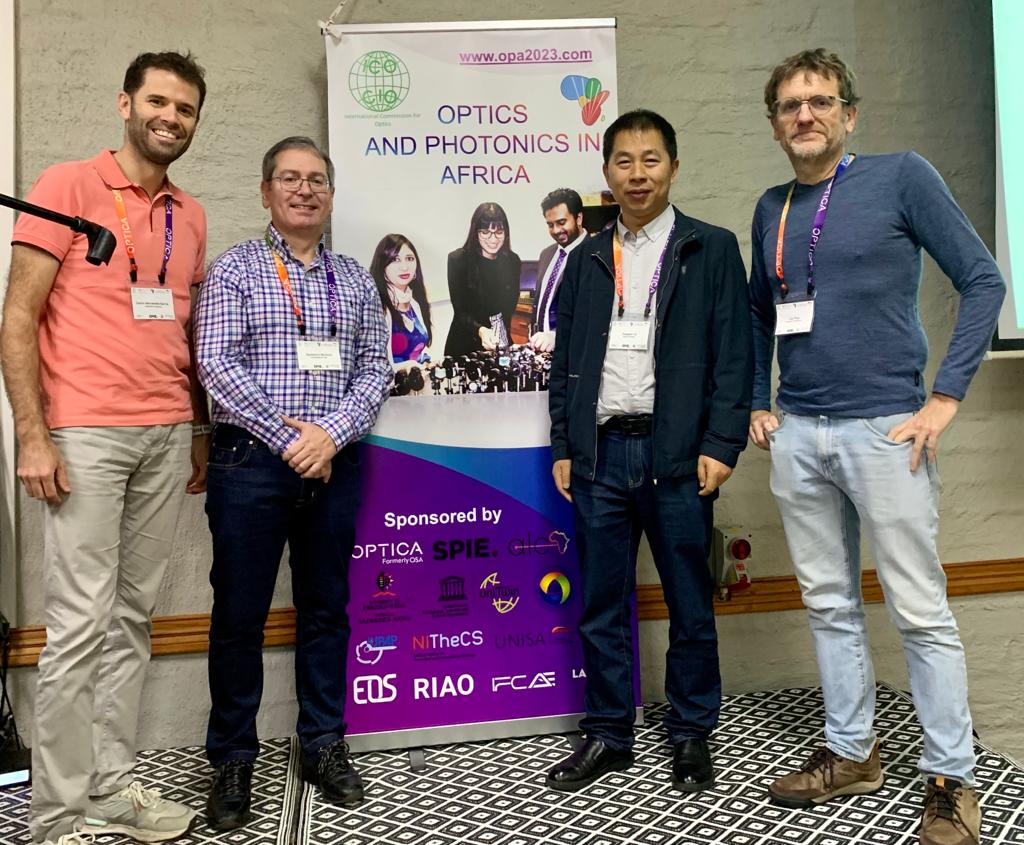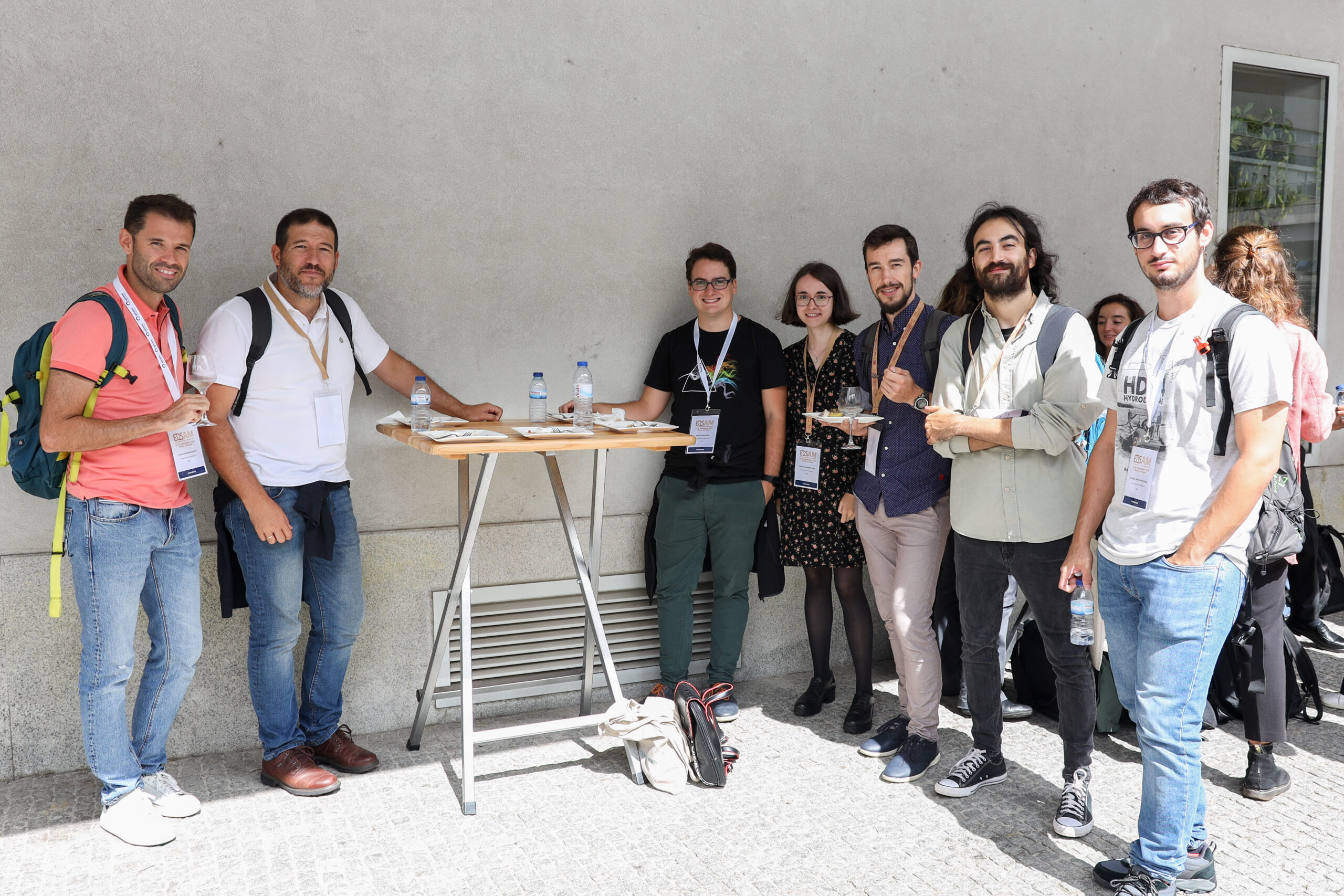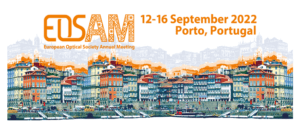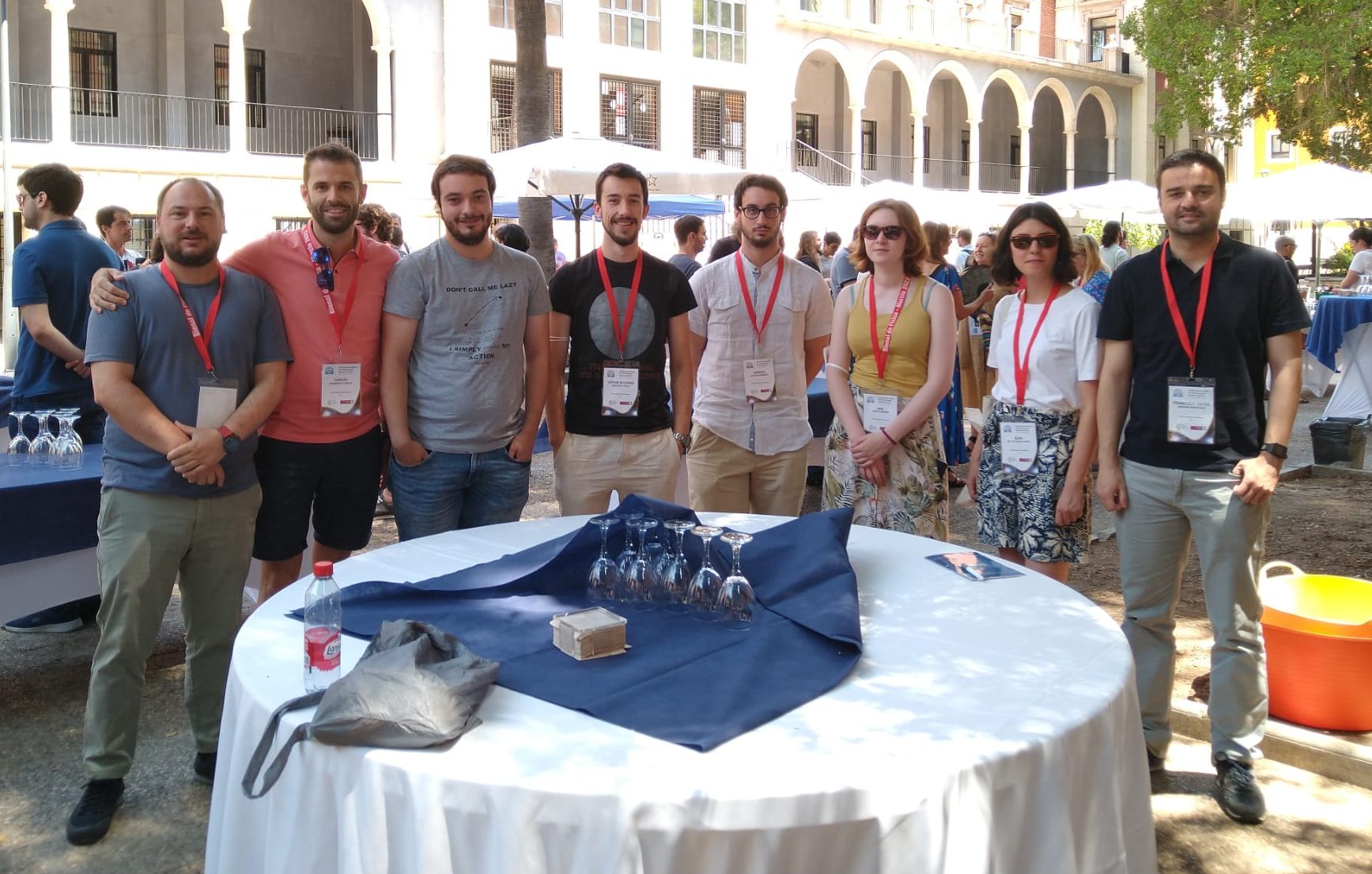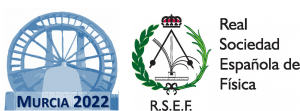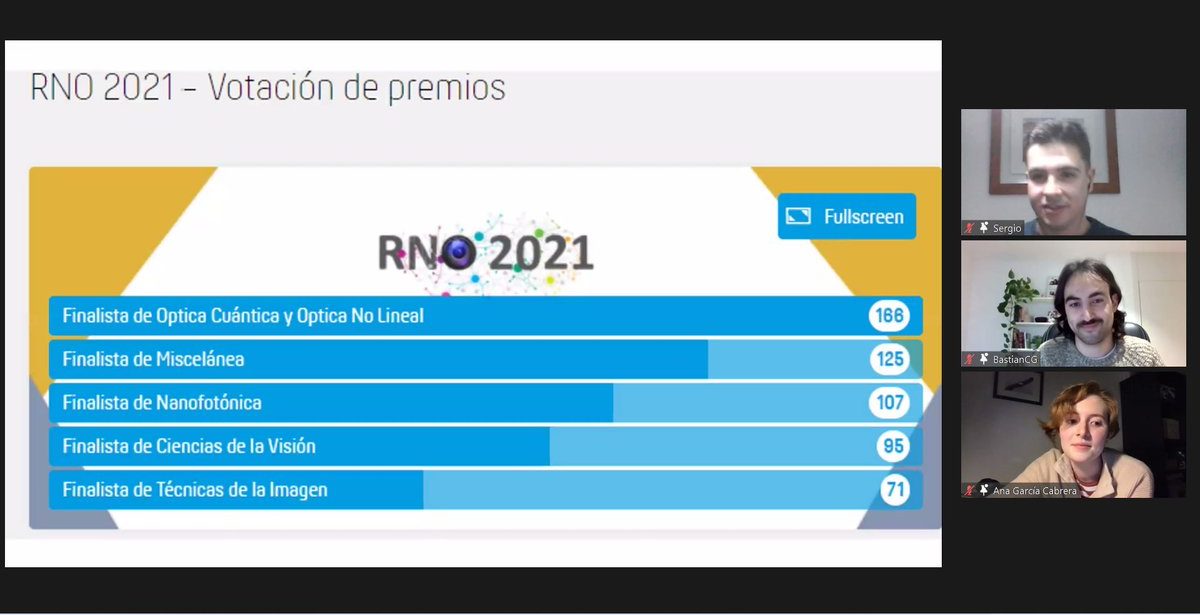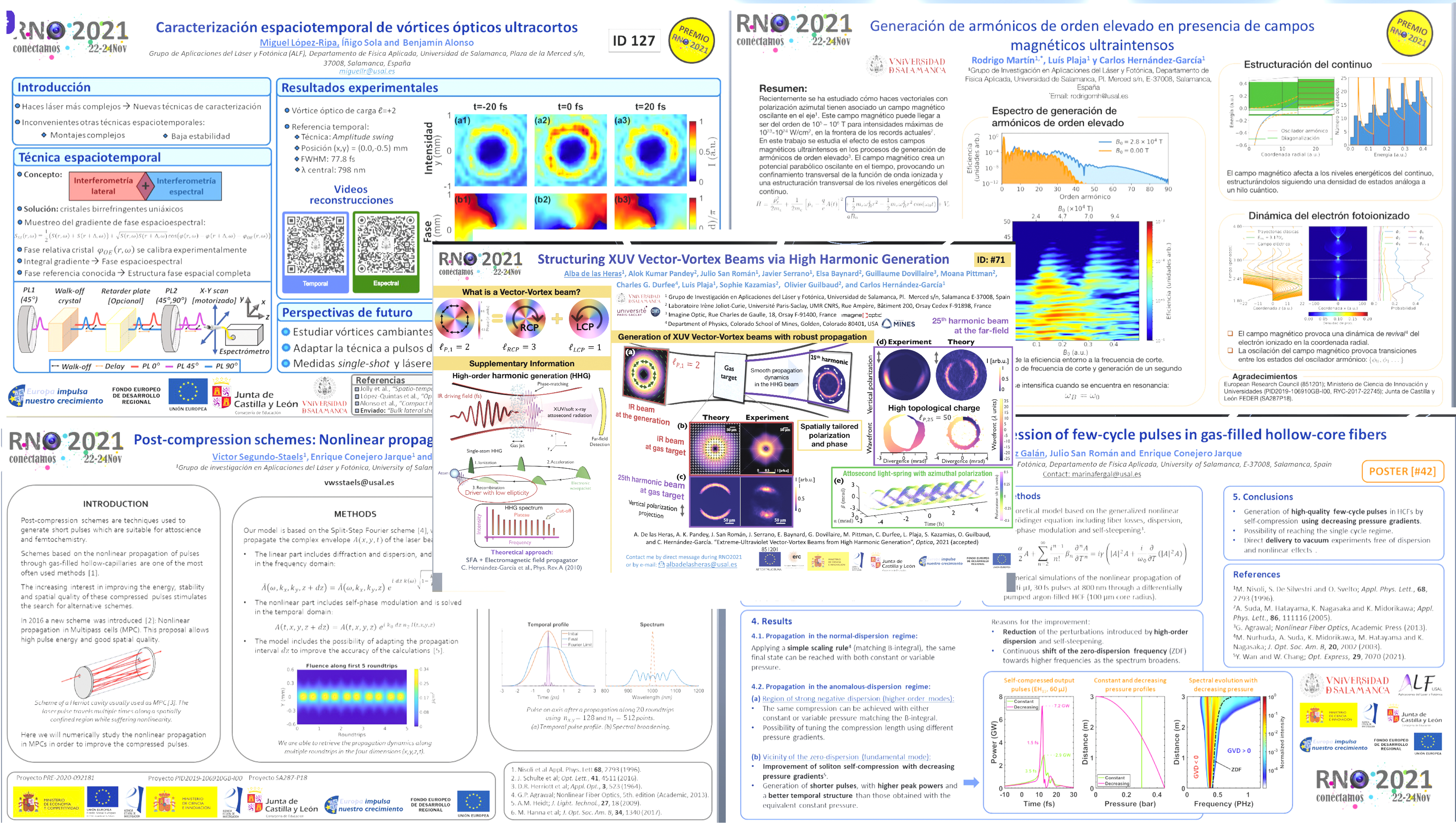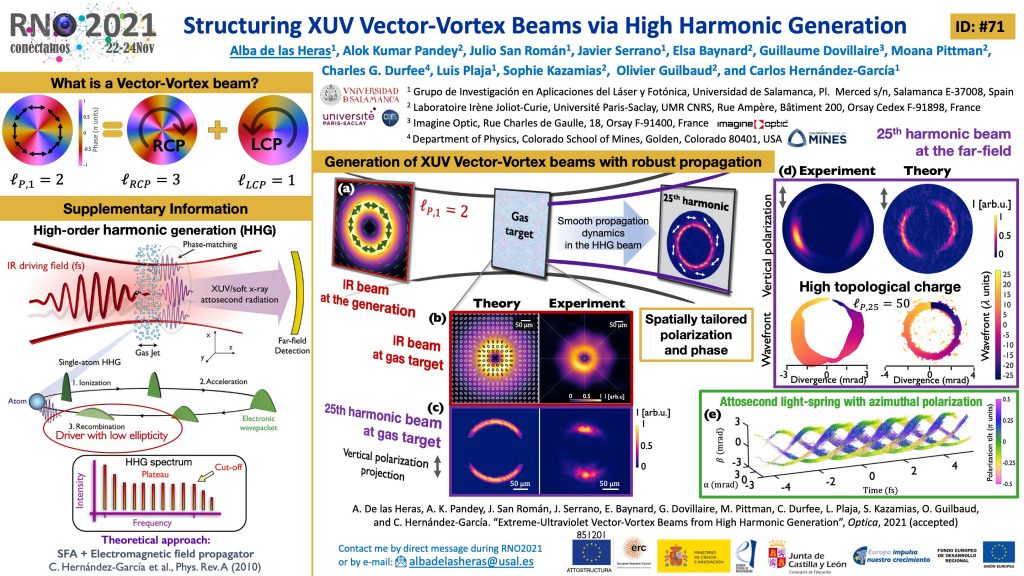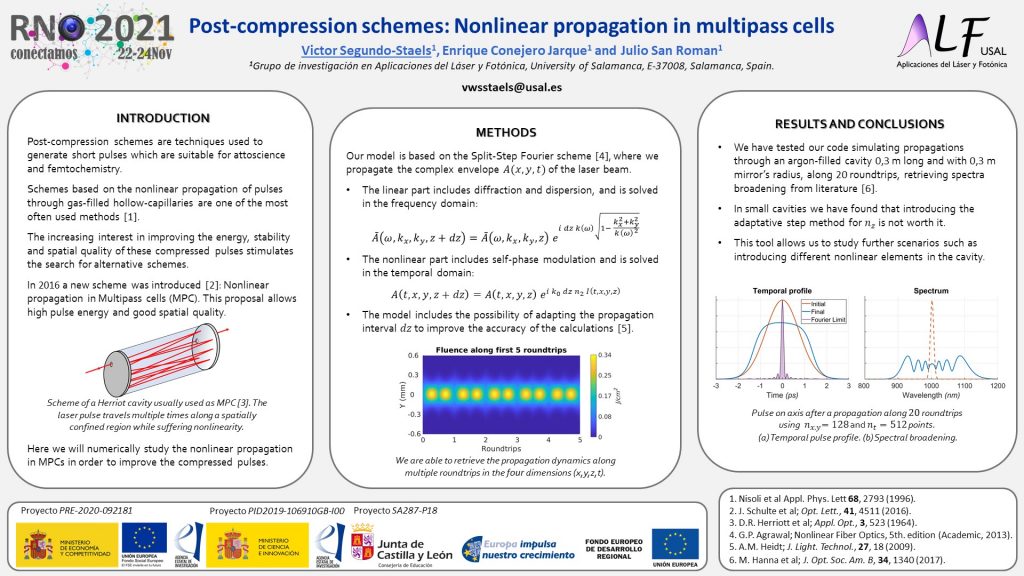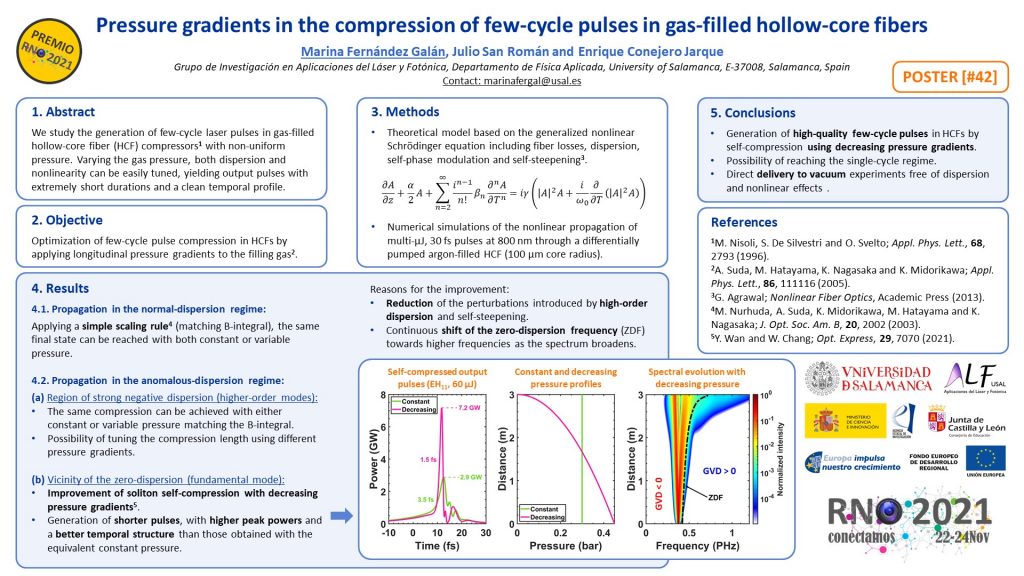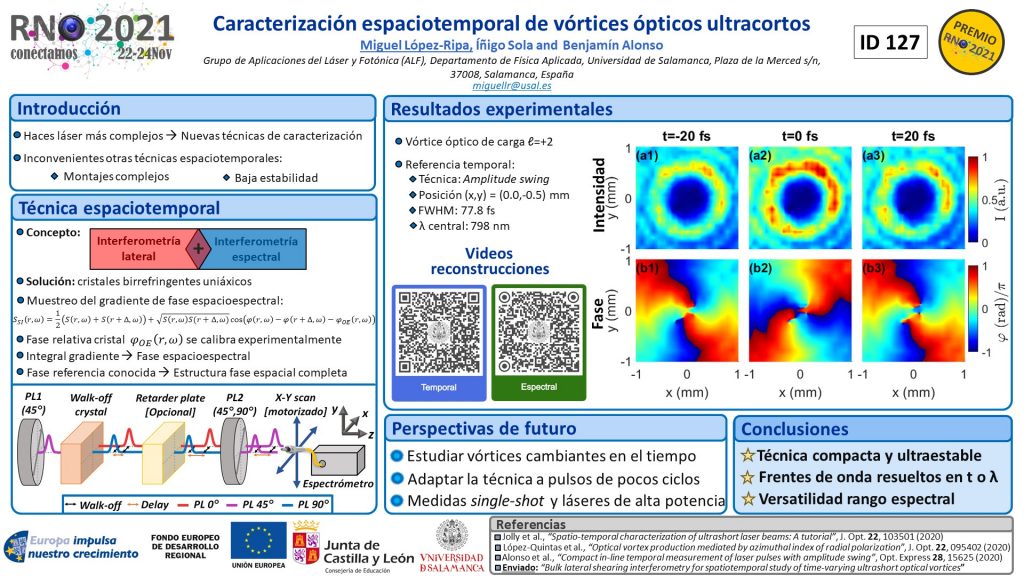The ALF USAL group had a prominent participation in the XIV National Optics Meeting and the V National Young Optics Meeting (RNO2024) held from July 2 to 5 in Murcia, Spain.
This event, which brings together leading experts and young talents in the field of optics, has been an exceptional platform to present the latest advances in research and development in this field.
The group contributed with a series of works that address various areas of modern optics, standing out for their innovation and scientific rigor. The presented works are summarized below:
- Attosecond Structured Light (Invited)
Autor: Hernández García, C. - Diseño de guías de ondas superficiales optimizadas para sensado y extracción de luz en materiales cristalinos fabricadas mediante escritura directa con láser de femtosegundo (Oral)
Autores: Arroyo Heras, V., López Quintas, I., Vázquez De Aldana, J. R., Bonduelle, M., Martín, G., & Romero Vázquez, C. - Medida de pulsos ultracortos vectoriales con amplitude swing (Oral)
Autores: Barbero, C., Alonso, B., & Sola Larrañaga, I. J. - Towards an all-fiber source of isolated attosecond pulses driven by high-energy sub-cycle waveforms from soliton dynamics (Oral)
Autores: Fernández Galán, M., Serrano, J., Conejero Jarque, E., Borrego-Varillas, R., Lucchini, M., Reduzzi, M., Nisoli, M., Brahms, C., Travers, J. C., Hernańdez-García, C., & San Román, J. - Sistema óptico aplicado a la espectroscopía resuelta en tiempo en el rango de femtosegundo y picosegundo (Oral)
Autores: Guerras, M., Lópe Quintás, I., & Sola Larrañaga, I. J. - Intense and isolated polarization-controlled magnetic fields from structured laser beams to drive nonlinear magnetization dynamics (Oral)
Autores: Martín Domene, S., Sánchez-Tejerina, L., Martín-Hernández, R., & Hernández García, C. - Generation of extreme-ultraviolet high-topological charge spatiotemporal optical vortices (Oral)
Autores: Martín-Hernández, R., Gui, G., Plaja, L., Kapteyn, H. C., Murnane, M. M., Liao, C.-T., Porras, M. Á., & Hernandez-Garcia, C. - Self-interference of Hermite-Gaussian high-order harmonics simulated through machine learning (Oral)
Autores: Pablos-Marín, J. M., Schmidt, D., De Las Heras, A., Westlake, N., Serrano, J., Lei, Y., Kazansky, P., Adams, D., Durfee, C., & Hernández García, C. - Topological spectroscopy: High Harmonic Generation from Graphene irradiated by structured fields (Oral)
Autores: Plaja, L., García Cabrera, A., Boyero-García, R., Zurrón-Cifuentes, O., Serrano, J., San Román, J., & Hernández-García, C. - Improving pulse self-compression in photonic crystal fibers using particle swarm optimization algorithm. (Oral)Autores: Vaquero, A., Galán, M. F., Rodríguez Frías, M. D., Conejero Jarque, E., & Méndez, C.
- Macroscopic simulations of high-order harmonic generation assisted by artificial intelligence. (Oral)Autores: Serrano, J., Pablos-Marín, J. M., & Hernández García, C.
- Clean Temporal Pulses from All-Bulk Multipass Cells. (Oral)Autores: Segundo-Staels, V., Conejero Jarque, E., & San Roman, J.
- Microscopía de generación de segundo armónico en cristales microestructurados con pulsos de femtosegundo: BBO y Nd:YAG. (Oral)Autores: Sevilla-Sierra, N., Rodríguez Vázquez de Aldana, J., Romero Vázquez, C., Mateos, X., & López Quintas, I.
- PW-class laser spatio-temporal characterization (Póster)
Autores: Barbero, C., García-García, E., Mendez, C., Rodríguez Frias, M. D., López-Ripa, M., Sola Larrañaga, I. J., & Alonso Fernández, B. - Fabricación de dispositivos fotónicos funcionales mediante escritura directa con láseres de femtosegundo. (Póster)Autores: Romero Vázquez, C., Arroyo Heras, V., Sevilla Sierra, N., López Quintás, I., & Vázquez De Aldana, J. R.
In addition to presenting their work, the researchers from the ALF USAL group also contributed to the conference by moderating several oral communication sessions:
- Luis Plaja, moderator of the Quantum and Nonlinear Optics session on Wednesday, July 3
- Carlos Hernández García, moderator of the Quantum and Nonlinear Optics session on Thursday, July 4
These works reflect the ALF USAL group’s commitment to scientific excellence and their ability to lead in the field of optical research. The diversity and depth of their studies presented at RNO2024 underscore their crucial role in advancing modern optics.

